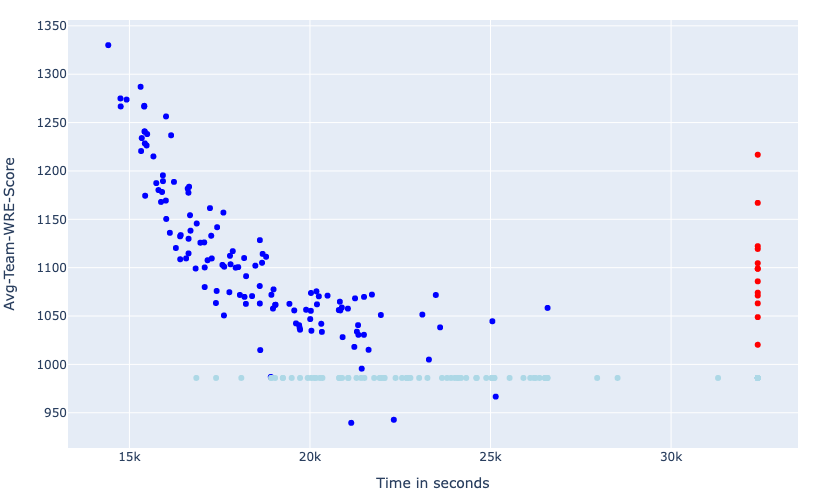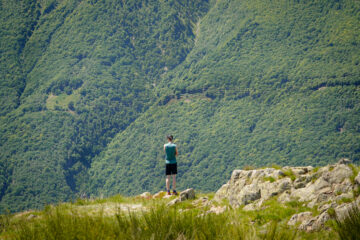In this post I am writing about something different, namely I am presenting a small analysis I created. I am looking at this year´s Tiomila results, partly together with current WRE-data.
I had some time and motivation on my hands, and was curious if I find anything interesting. In the end I enjoyed the process but leave further discoveries, if there are any, to others by happily sharing the created plots. If anyone is interested, they can send me an email asking for the jupyter-notebook I worked in.
First I will shortly explain how to read the plots and after that will present some discoveries I found.
The first plot (of the three plot-groups) is always the plot for the women´s relay, the second for the men´s relay. Dark-blue means classified, while light-blue is classified but the team has no runner with a wre-score. Red means mispunched.
The rest is explained in the title above each plot-group. The plots are images, and the html-version is linked to them.
Count of runners per team who currently have a WRE-score
Average WRE-team-score over the team´s finishing time
(WRE-team-score of avg-point-score per team-runner)
Runner-Nationality distributed over relay-leg
(Omitting Finland, Norway, Sweden and Unknown nationalities)
Assumptions
For missing wre-data for runners the avgerage wre-scores were used
– While this is certaintly not perfect, I didn´t saw a better way to augment missing data. Giving those runners zero points would unnecessarily lower the team´s score, and taking the average over only those runners scores of a team which are available could potentially skew the view as well, and removing teams with missing data would result in unusable plots.
– For teams with runners who mostly have ‘high’ scores but also runners with no scores, this can lead to unrepresentable team-scores
– Taking the WRE-list average instead of the average over for example all Tiomila runners who have WRE points seemed less biased
Limitations
– Obviously not every runner is also listed in the wre-list, and has therefore no nationality and wre-score associated to them.
– In the men´s relay wre-scores are also the wre-scores of female runners included which slightly skews the picture, as the scores are not directly comparable across genders. However, the impact of this should be limited.
– For completeness, it should be noted that the mass-start skews the view for the last teams. Again, the impact of this should be limited, in big part due to the focus on top teams for this analysis.
– Some runners do not have any WRE-race recent enough to currently have a score, although they perform above average (e.g. J. Leandersson)
– Due to “fun” inconsistencies in the conversion to english-letters between the names in the Swedish eventor-system and the wre-list, did I make some manual name edits. I focused on the best runners and therefore do not think it is complete, again because of the focus the impact should be low. (e.g. S.Fast/S.Fasth, ‘ä’ to ‘a’/’ae’, etc.)
Discoveries
First I want to thank Bojan B. for some quality comments on what to display in the plots, and what to look for afterwards.
The top-right outlier in the men´s group-2 plot is IFK-Gb.-4 which consisted of the runners from the first and second place in the women´s relay and therefore has such a high score.
In group-3 you can see that the legs (1,3,5) and (1,4,8,10) for the women´s and men´s relay are run by more foreign runners that the others legs (un-biased expectation would be an equal-distribution).
If anyone has a better title photo from 10Mila 2023, I am happy to update it.









0 Comments